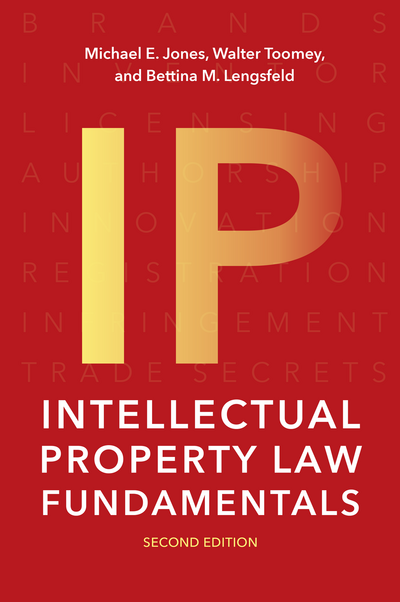Intellectual Property Law Fundamentals
Second Edition
by Michael E. Jones, Walter Toomey, Bettina M. Lengsfeld
2020
Tags: Intellectual Property
Teacher's Manual available
452 pp $60.00
ISBN 978-1-5310-1359-2
eISBN 978-1-5310-1360-8
This introductory text explores the origins, sources, function, and values of the exciting world of Intellectual Property (IP). Topics covered include copyright, trademark, patent, trade secret, domain names, and geographical indication, with primary attention given to IP law in the United States and ample coverage of key international laws. The history, development, and modern language is presented in an easy-to-absorb modular format with exercises and review questions designed to breakdown the many aspects of US and international IP law. This book is designed as a text for classroom use.
Paralegal and Legal Studies students using this text should be able to:
- Identify and describe the basic types of protectable IP rights in the United States;
- Identify how IP rights have changed in the United States throughout history until the present laws;
- Differentiate between the different forms of IP and the specific common law and statutory rights secured under both United States and, to a more limited degree, foreign law;
- Identify the limits of IP rights by duration and statutory interpretation of language like the "fair use" doctrine for copyrights, and constitutional boundaries under the First Amendment;
- Understand the basic research process used to discover or locate existing protectable interest in IP in the United States;
- Understand the basic application processes used in the United States to register certain types of IP in order to obtain greater protection, and be familiar with the scope of that greater protection;
- Demonstrate a basic familiarity with some common government websites and online research tools used in IP legal practice;
- Articulate causes of action to protect IP rights, and understand the common defenses to claims of infringement or unfair competition;
- Understand the various remedies available to address IP infringement or unfair competition in the United States, including civil and criminal proceedings and monetary and non-monetary remedies; and
- Discuss the public policy and societal value considerations behind modern IP rights and their limits.
Comp Copy If you are a professor teaching in this field you may request a complimentary copy.


